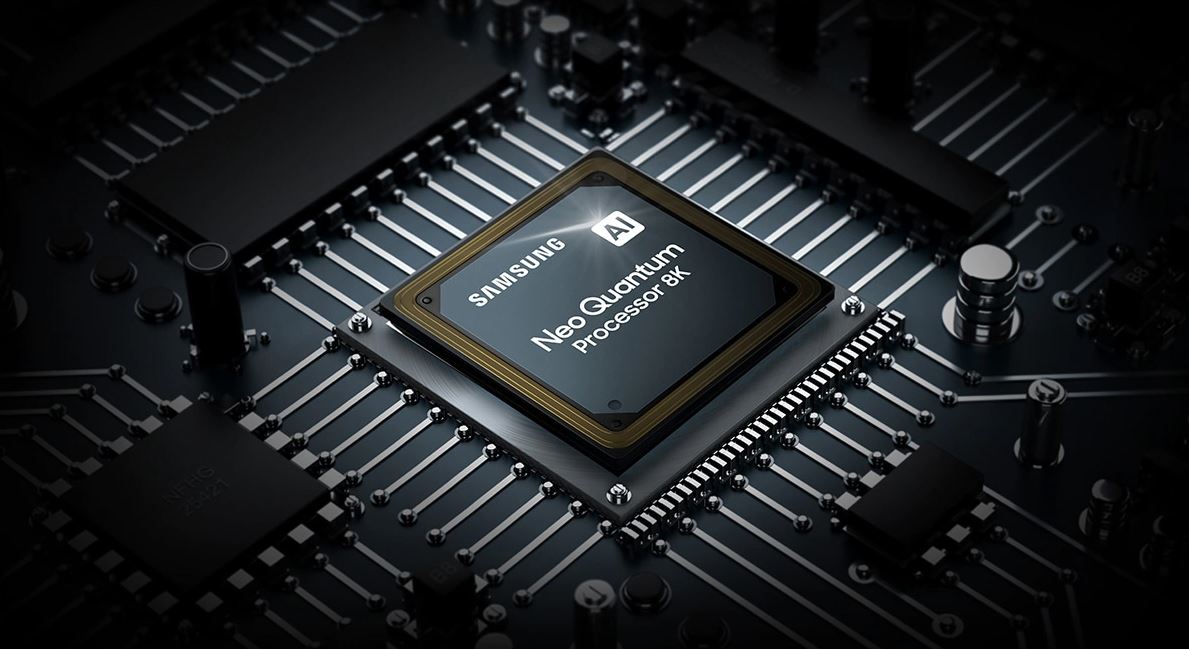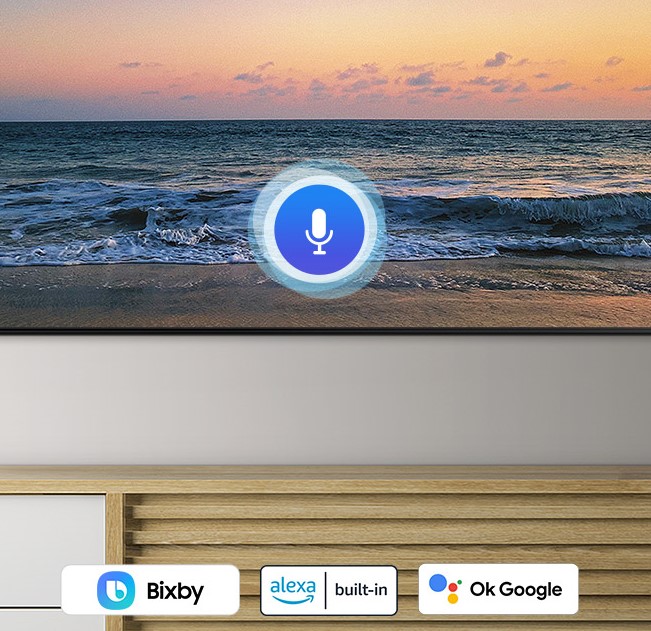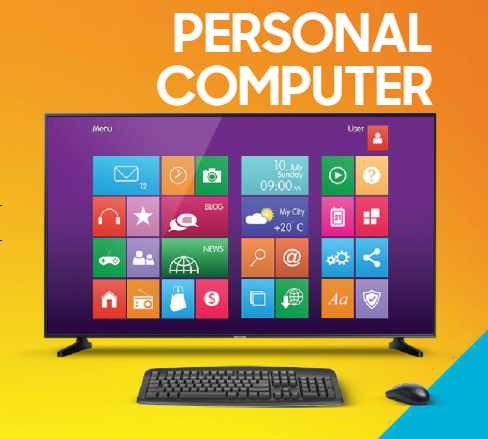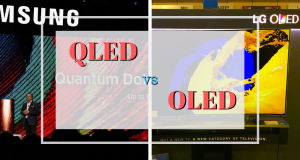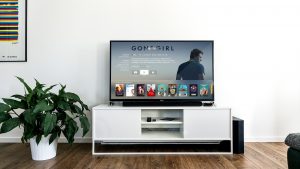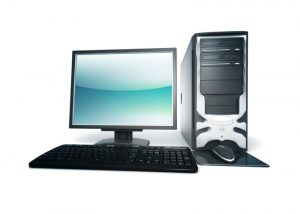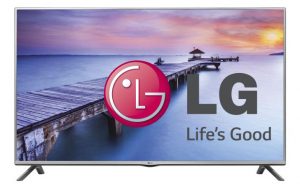Samsung LED TV in India – Review 2024
- Key Samsung TV Technologies
- Neo QLED TV
- 8K Resolution
- AI-Powered Neo Quantum Processor
- Frame TV with Customizable Bezels
- Quantum HDR
- Smart Hub OS from Samsung
- Samsung Smart TV Plus: Free TV Service
- Samsung Solar Cell Remote: Remote that Runs on Light!
- Personal Computer, Home Cloud, and Live Cast
- Clear Motion Rate (CMR) in Samsung TVs
- Curved TVs in Samsung
- Superior Audio Output with Object Tracking Sound (OTS) and Active Voice Amplifier (AVA)
- Triple Protection to suit Indian Conditions
- Samsung: Pros and Cons
- Some Popular Samsung Models:
Reliability, versatility, and dependable after-sales service make Samsung one of the strongest TV brands in India. The latest lineup of Samsung has brought incremental changes in its features to cater to the needs of its customers in the evolving world of technology.
- Key Samsung TV Technologies
- Neo QLED TV
- 8K Resolution
- AI-Powered Neo Quantum Processor
- Frame TV with Customizable Bezels
- Quantum HDR
- Smart Hub OS from Samsung
- Samsung Smart TV Plus: Free TV Service
- Samsung Solar Cell Remote: Remote that Runs on Light!
- Personal Computer, Home Cloud, and Live Cast
- Clear Motion Rate (CMR) in Samsung TVs
- Curved TVs in Samsung
- Superior Audio Output with Object Tracking Sound (OTS) and Active Voice Amplifier (AVA)
- Triple Protection to suit Indian Conditions
- Samsung: Pros and Cons
- Some Popular Samsung Models:
Key Samsung TV Technologies
Neo QLED TV
In 2021 Samsung released the Neo QLED TVs, improving their QLED line-up launched in 2015. Like its predecessor, Neo QLED uses the quantum dot display. Now, what is a quantum dot display? Keep reading…
Taking cues from the rapidly expanding field of quantum computing, Samsung has started to roll out quantum dot-powered displays in its high-end smart TVs. Quantum dots are nano-sized crystals (one billionth of a meter or 1/10,000 of hair strand size!) made of semiconductor materials, which have a very good light absorbing and emitting capacity making it apt for brilliant display quality and energy efficiency. As opposed to conventional display which tends to get mix up with adjacent colors, the quantum display provides 100% color volume thus making visuals on the screen sharp and life-like. With over a billion precise colors, Samsung neo QLED TVs provide rich and perfect colors that continue to stay true even while displaying the brightest scenes that would otherwise wash out on other TVs.
And what’s the difference between QLED and Neo QLED you may wonder? Neo QLED uses smaller LED lights called mini LEDs in an LED backlight array (behind the screen). Smaller LEDs mean more LEDs per unit area. This in turn allows picture reproduction to be more precise and accurate.
Presently Neo QLED TV lineup is available in five sizes: 85-inch, 75-inch, 65-inch, 55-inch and 50-inch.
8K Resolution
With 4K resolution (3840 x 2160 pixels) slowly becoming common, having 8K resolution (7680 x 4320 pixels) elevates TV into the premium category.
For those who are wondering what makes 8K TV superior, the answer is that 8K is super high resolution—4 times higher than 4K and 16 times higher than Full HD (your usual 1080p content).
Brimming with 33 million+ pixels, Samsung’s 8K Neo QLED TV gives the user an amazing pixel-less viewing experience. 8K resolution TVs display even the tiniest of details in every scene so that they don’t miss out on the nuances of the film.
However, keep in mind that 8K resolution content would hog up a lot of bandwidth. Therefore, you’ll need a very high-speed broadband connection (preferably above 100 MBPS) to watch 8K content. Moreover, in India, we don’t have channels featuring 8K resolution. Content in 8K in YouTube and OTT presently is very limited.
AI-Powered Neo Quantum Processor
Another good thing about the premium Neo QLED line-up of TVs from Samsung comes with artificial intelligence (AI) powered neo quantum processor. It uses 16 different neural networks (sophisticated computational programs) to bring the best out of 8K television. Neo quantum processor significantly reduces noise in the image, bring out finer detailing and crisper visuals.
Frame TV with Customizable Bezels
The Frame TV launched by Samsung is a masterpiece for art aficionados. It delivers vivid pictures on the QLED screen when on and soothing artwork when TV is off.
The Frame TV will not only entertain but also resonate with the artistic styling of the home. It comes with thousands of artistic pictures from renowned institutions which would serve as frame art when TV is off.
In fact, the Frame TV is a confluence of art and technology. It comes with a motion sensor that detects the presence of humans inside the room and turns the TV display into an artwork. Similarly, when no one is in the room it turns itself off avoiding wastage of energy. Frame TV has an ambient light sensor as well which automatically adjusts screen brightness based on the ambient light conditions just like a high-end smartphone. It also gives a manual customization option to set the color tone as the user needs.
The new Samsung Frame TV comes with a customizable bezel. So, in case you want to change the color of the bezel, you can buy a bezel with the color of your choice and replace it.
Quantum HDR
High Dynamic Range or HDR, as it is best known, simply means more dynamic contrast, better brightness, and a wider color palette that brings your TV viewing experience to a more life-like one. So, the whites are brighter, blacks are darker and other colors more natural. HDR enhances image quality and details that are usually lost in translation in older TVs with standard display models.
Now if you decide to purchase Samsung smart TV especially premium QLED, you would be confused with different HDR options varying across models, like quantum HDR 8x, quantum HDR 12x, quantum HDR 16x, quantum HDR 32x, etc. And guess what there is no clear information provided by the manufacturer about their differences!
If you read our article on HDR you’ll understand that HDR for recorded content (not the live telecast) is either Dolby Vision (proprietary or paid technology) or HDR10 (open source or free technology).
Samsung is a major proponent of HDR10 and its successor HDR10+. Whereas arch-rival, LG boasts Dolby Vision HDR in its premium offering.
The multiplier numbers in the end like of HDR like 8x, 12x, 16x are most likely to be a multiplier of peak brightness (measured in nits) of some base unit (100 nits most likely). So, a Samsung TV with HDR 8x will support peak brightness of 800 nits whereas models coming with HDR 16x will support 1600 nits and so on. We come to this conclusion based on how older models of Samsung were marketed. Instead of the straightforward name of HDR10 Samsung used HDR 1000, HDR 1500, HDR 2000, etc. Here numbers like 1000, 1500, 2000, etc denoted the peak brightness.
Smart Hub OS from Samsung
Samsung and LG are two major TV manufacturers who have resisted using Google’s Android operating system (OS) in their smart TVs. Samsung uses its Tizen OS which is popularly called Smart Hub, in its smart TV offering. Newest Samsung smart TVs come with Tizen 6.0 OS.
Samsung has managed to turn Smart Hub into a miniature entertainment hub, capable of giving easy access to cloud gaming, high-quality HDR movies, music, all in a single streamlined package.
Navigating manually through the menu on TV can be daunting sometimes. But blissfully premium Samsung TVs come with voice assistants to smoothly navigate the settings menu, adjust the volume or search for specific content. Premium Samsung TVs come with not just one but three voice assistants: Bixby, Google Assistant, and Alexa. You can select the voice assistant you would like from the settings.
Samsung Smart TV Plus: Free TV Service
This year Samsung has released the Samsung Smart TV Plus feature (as an application) in its smart TVs. With Smart TV Plus, viewers can enjoy free access to 30+ TV channels telecasting content across genres such as news, sports and games, science & technology, movies, and more. These channels would be streamed free of cost, without needing to take additional subscriptions or the hassle of installing an external setup box. Though the catch here it is ad-infused and you’ll have to watch ads to use the Smart TV Plus service (just like the ads you see on Youtube).
Samsung Solar Cell Remote: Remote that Runs on Light!
How many times has it happened that all of a sudden, your remote stops working and you notice that batteries inside have drained out? And to your dismay, you do not have extra batteries to refill! Solar cell remote eliminates these hassles; thanks to solar charging capabilities. These remotes come with a solar cell panel at the backside which can refuel the charge using light!
To charge the solar cell remote, you just need to leave the back of the remote facing up in a place where there is ample light. Not only sunlight you can also harness indoor lightning at home to fuel the solar-powered remote.
Another good thing about these remotes is they come with a USB Type C charging option too. Whenever you plug on the type C charging (if your TV is on) you’ll be notified about the status of the battery on the TV. When the charging completes, you’ll receive a notification on the TV that the charging is complete. This is fantastic! Isn’t it?
Personal Computer, Home Cloud, and Live Cast
Most of the new Samsung smart TVs including the budget Samsung 7 in 1 TV comes with Personal Computer mode that allows the user to transform their TV into a giant PC. Using Personal Computer mode, you can do your computational work from the cloud, mirror your laptop onto the giant screen and even access your office computer remotely, there is also Home Cloud mode which allows you to automatically save important files on the TV itself. Not just computers you can even cast your mobile on the TV using Live Cast functionality.
Clear Motion Rate (CMR) in Samsung TVs
TVs are marketed using different specs and one of the lesser-known parameters is the refresh rate. Refresh rate is how frequently a TV switches the image (alternatively called, “frame”) on screen. So a TV with a refresh rate of 50 Hz will switch 50 images every second.
Samsung markets refresh rate as Clear Motion Rate (CMR) with inflated numbers like 200, 300, 1200, 2100, 3200, etc. It is better to look at the “refresh rate” which is usually tugged under the technical specification sheet of the model. The higher the refresh rate better is the visual performance. Higher refresh rate reduces blur and judder problems which are typically seen when high-action fast-moving scenes are played.
Curved TVs in Samsung
Samsung is one of the pioneers of curved televisions and presently the only reputed brand providing curved TVs in India. The gently carved curves around the Samsung’s television helps the viewers to be at the epicenter of the action, providing them with an apparently wider view field and make their viewing experience more uniform.
High ends curved TV models also are armed with auto depth enhancer, a technology developed to provide viewers with noticeable depth of the scene which is otherwise missed in the standard television. Though curved TVs are eccentric by design, giving users an immersive experience of depth, sharpness, and contrast but the downside is they are slightly more vulnerable to the onscreen reflection of the incident light.
Superior Audio Output with Object Tracking Sound (OTS) and Active Voice Amplifier (AVA)
Samsung has introduced audio technology called Object Tracking Sound (OTS) in premium QLED models. The idea of OTS is to track an object in the scene from which the sound is emanating and thereby adjust sound out from speakers such that viewers can real-life-like sound. Like for example, when an ambulance with a siren moves from left to right, you’ll feel get the feel of an ambulance passing by as you watch the TV.
Another addition in the acoustic department is a technology called Active Voice Amplifier (AVA) which is Samsung’s proprietary tool to enhance dialogue’s audibility. Many times you must have experienced that when there is background music, the audibility of dialogue is subdued by other background music. This is where an active voice amplifier comes to the rescue. AVA amplifies the sound of the dialogue so that they are loud and clear enough to be heard.
Triple Protection to suit Indian Conditions
Many Samsung models, especially the budget ones offer Triple Protection which is quite well suited for Indian conditions. This feature protects the TV from voltage fluctuations, power surges (lightning), and humidity. It helps improve the durability of the TV and gets you the max out of your investment.
Samsung: Pros and Cons
Samsung, name itself instills the faith in the product—that’s the brand image Samsung has managed to create over time. No doubt Samsung makes very good TVs but their pricing has is on a higher side. Nevertheless, people still trust Samsung when it comes to buying a TV.
Another plus point is that even in HDR, Samsung TVs maintain a low input lag which is great for gaming. With 4K TVs gaining popularity, resolution for other media devices is still on the lower side. This is where Samsung TVs excel by enabling even the lower quality content such as broadcast TV or DVDs to scale up to the 4K resolution so that the viewing experience is not ruined due to resolution mismatch.
Despite abundant takeaways, there are areas where Samsung doesn’t hold up to its reputation. Build quality is one of them. Leaving aside the expensive QLED and Frame TVs, other Samsung TV models do not really have an outstanding build quality. Budget and mid-range Samsung TV use a lot of plastic and it isn’t unusual for some parts of the TV to come off after some use. Another problem which is seen in few Samsung TV models is that when TV is on a standby mode and not used for long, it disconnects from the WiFi. The user has to manually reconnect to the WiFi again which is bit annoying. Barring these few shortcomings, Samsung still dominates the TV market and ranks higher on the reliability meter.
Some Popular Samsung Models:
 Samsung 80 cm (32 Inches) Wondertainment Series HD Ready LED Smart TV UA32T4340BKXXL (Glossy Black)
Samsung 80 cm (32 Inches) Wondertainment Series HD Ready LED Smart TV UA32T4340BKXXL (Glossy Black)
 Samsung 80 cm (32 inches) Wondertainment Series HD Ready LED Smart TV UA32TE40AAKBXL (Titan Gray)
Samsung 80 cm (32 inches) Wondertainment Series HD Ready LED Smart TV UA32TE40AAKBXL (Titan Gray)
 Samsung 108 cm (43 inches) Wondertainment Series Full HD Smart LED TV UA43TE50FAKXXL (Black-Hair Line)
Samsung 108 cm (43 inches) Wondertainment Series Full HD Smart LED TV UA43TE50FAKXXL (Black-Hair Line)
 Samsung 108 cm (43 inches) Crystal 4K Neo Series Ultra HD Smart LED TV UA43AUE65AKXXL (Black)
Samsung 108 cm (43 inches) Crystal 4K Neo Series Ultra HD Smart LED TV UA43AUE65AKXXL (Black)
 Samsung 108 cm (43 inches) Crystal 4K Series Ultra HD Smart LED TV UA43AUE60AKLXL (Black)
Samsung 108 cm (43 inches) Crystal 4K Series Ultra HD Smart LED TV UA43AUE60AKLXL (Black)
 Samsung 138 cm (55 inches) Crystal 4K Neo Series Ultra HD Smart LED TV UA55AUE65AKXXL (Black)
Samsung 138 cm (55 inches) Crystal 4K Neo Series Ultra HD Smart LED TV UA55AUE65AKXXL (Black)
About the Author:
Hussain Kanchwala is an Electronics Engineer from University of Mumbai. As an Analyst at BijliBachao he keeps a tab on latest technologies in gadgets and appliances, tracks businesses of white goods companies and monitors the consumer behavior. With a background in engineering, penchant for detail, and flair for writing he regularly write reviews about brands and their products. More from this author.

